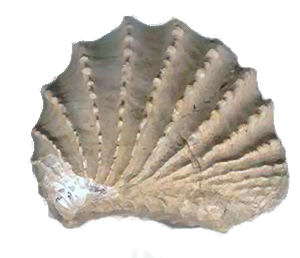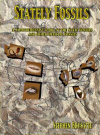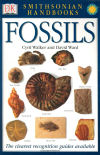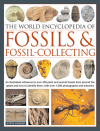
HOME
INTRO
SYMBOLS
ALMANAC
ECONOMY
GEOGRAPHY
STATE MAPS
PEOPLE
FORUM
NEWS
COOL SCHOOLS
STATE QUIZ
STATE LINKS
BOOK STORE
MARKETPLACE
NETSTATE.STORE
NETSTATE.MALL
GUESTBOOK
CONTACT US


Tennessee State Fossil

Tennessee State Fossil: Pterotrigonia (Scabrotrigonia) thoracica
The efforts to name an official state fossil for the State of Tennessee began at the University of Tennessee at Martin. Members of the campus GeoClub, led by Professor of Geology, Dr. Martin A. Gibson, worked from 1996 on the project, determining criteria and a suitable choice for the official honor.
GeoClub is a student organization at UT Martin that was created to promote geologic and geographic thought within the campus community. Its main objective is to facilitate the scholastic advancement of its members within a cooperative and cordial social environment. Projects and events outside of classrooms and laboratories that contribute to students' understanding of geologic and geographic phenomena are also part of GeoClub's mission.
("UTM Department of Agriculture, Geosciences & Natural Resources")
Dr. Gibson is a Professor of Geology at the University of Tennessee at Martin. One of his interests, revealed in the resolution, is "Fossils and paleoecology of the Cretaceous Coon Creek Formation of Western Tennessee." He also works extesively with K-12 teachers in the state, speaking at area schools "on geologic topics ranging from minerals and rocks to earthquakes to fossils (yes, especially dinosaurs for the kids)." ("Gibson's World of Paleo")
The bivalved invertebrate, Pterotrigonia (Scabrotrigonia) thoracica, became the official fossil of Tennessee when Governor Don Sundquist signed House Joint Resolution No. 552 on May 11, 1998.
Filed for intro on 03/02/98
HOUSE JOINT RESOLUTION 552
By MaddoxA RESOLUTION to designate Pterotrigonia (Scabrotrigonia)thoracica as the official fossil of Tennessee.
WHEREAS, the rocks of Tennessee preserve a rich array of fossil types, including invertebrates, vertebrates and plants from all regions of Tennessee, and these fossils record life in Tennessee throughout the many different periods of our state’s past; and
WHEREAS, fossils are the only record of the development and history of life on Earth and are thus a precious scientific and natural resource; and
WHEREAS, Tennessee fossils have been the focus of scientific study and collection for over 200 years, often figuring prominently in scientific advancements; and
WHEREAS, recognition and conservation of our natural resources is important for future residents of the State of Tennessee; and
WHEREAS, the pursuit of fossils encourages awareness and appreciation of the natural wonders of Tennessee; and
WHEREAS, fossils have great popular appeal to students, collectors, and visitors to Tennessee, providing a common focus for the education of our citizens and visitors and increasing public awareness and understanding of earth history and life on earth; and
WHEREAS, fossils and earth history comprise a major component of the Tennessee Science Framework for K-12 education, and thus provide Tennessee educators with a valuable teaching tool; and
WHEREAS, the bivalved invertebrate Pterotrigonia (Scabrotrigonia) thoracica, which inhabited the ancient seas that once covered much of Tennessee, is a unique fossil from the Coon Creek Formation of the Cretaceous geologic time period, which is well known to fossil collectors, researchers, and educators in Tennessee; and
WHEREAS, Pterotrigonia (Scabrotrigonia) thoracica epitomizes the many species of extinct organisms whose fossil remains are so abundantly preserved in the rocks throughout Tennessee, and is an easily recognizable symbol of Tennessee’s fossil resources; and
WHEREAS, students and other interested persons have the opportunity to personally collect their own specimens of Pterotrigonia (Scabrotrigonia) thoracica and experience the "hands-on" approach to learning about Tennessee's fossil resources; now, therefore,
BE IT RESOLVED BY THE HOUSE OF REPRESENTATIVES OF THE ONE-HUNDREDTH GENERAL ASSEMBLY OF THE STATE OF TENNESSEE, THE SENATE CONCURRING, That the fossil bivalve Pterotrigonia (Scabrotrigonia) thoracica of the Coon Creek Formation is hereby designated as the official fossil of Tennessee.
BE IT FURTHER RESOLVED, That the Secretary of State is directed to include pertinent information about the fossil bivalve Pterotrigonia (Scabrotrigonia) thoracica, including its designation as the official state fossil, in the 1999-2000 edition of the Tennessee Blue Book.
BE IT FURTHER RESOLVED, That an enrolled copy of this resolution be transmitted to the Secretary of State.
Sources...
The State of Tennessee. Tennessee Code Annotated. Nashville:State of Tennessee. Web. 10 August 2011
The Tennessee General Assembly. House Resolution No.552. Nashville:State of Tennessee. Web. 11 Aug 2011
"GeoClub." UTM Agriculture, Geosciences & Natural Resources. University of Tennessee, n.d. Web. 11 Aug 2011. .
"Home page." Gibson's World of Paleo. Dr. Martin A. Gibson, n.d. Web. 11 Aug 2011.
Shearer, Benjamin F. and Barbara S. State Names, Seals, Flags and Symbols: A Historical Guide Third Edition, Revised and Expanded. Westport, Conn: Greenwood Press, 3 Sub edition, 2001.
Additional Information
The State Fossil of Tennessee: The Frank H. McClung Museum, Knoxville, is a general museum with collections in anthropology, archaeology, decorative arts, local history, and natural history.
Tennessee State Fossil: University of Tennessee at Martin. The UT GeoClub at Martin was the driving force behind adoption of this Tennessee state fossil.
Pterotrigonia (Scabrotrigonia) thoracica: Paleobiology Database: a public resource for the global scientific community, organized and operated by a multi-disciplinary, multi-institutional, international group of paleobiological researchers. Its purpose is to provide global, collection-based occurrence and taxonomic data for marine and terrestrial animals and plants of any geological age.
State fossils: Complete list of official state fossils from NETSTATE.COM.
More symbols & emblems: Complete list of official Tennessee state symbols from NETSTATE.COM.

Stately Fossils
Stephen Brusatte
Stately Fossils: A Comprehensive Look at the State Fossils and Other Official Fossils, buy Stephen Brusatte. 234 pages. Publisher: Fossil News (September 2002) The only book in print on the subject of state fossils, Stately Fossils offers an in-depth treatment of the natural and cultural history behind the official fossils of every state... and more! The book contains 80 photos and over 300 references to further information.

Fossils Tell
of Long Ago
Fossils Tell of Long Ago, by Aliki. 32 pages. Publisher: Collins (March 21, 1990) Reading level: Grades Kindergarten - Grade 3. Sometimes it's the imprint of an ancient leaf in a rock. Sometimes it's a woolly mammoth, frozen for thousands of years in the icy ground. Sometimes it's the skeleton of a stegosaurus that has turned to stone.
A fossil is anything that has been preserved, one way or another, that tells about life on Earth. But you can make a fossil, too--something to be discovered a million years from now--and this book will tell you how.

Fossil
Paul Taylor
Fossil (DK Eyewitness Books), by Dr. Paul D. Taylor. 72 pages. Publisher: DK Publishing, Inc. (August 2, 2004) Reading level: Grades 4 - 7. Here is an original and exciting new look at fossils - the remains of long-vanished animals and plants. Stunning real-life photographs of the spectacular remains of ancient lives offer a unique "eyewitness" view of what fossils are, how they were formed, and how they lived millions of years ago. See pearls that are 50 million years old, a dinosaur's toe, a troublesome "snake" that was turned to stone, a fossilized human being, and a snail made of precious stones. Learn how fossils are formed, how trilobites have been preserved for 590 million years, where to look for a belemnite, and how fossils helped the pharaohs of ancient Egypt. Discover which are the most precious fossils in the world, where ammonites lived, how big mammoths were, what a devil's toenail looks like, and much, much more.

Fossils
Fossils (Smithsonian Handbooks), by Cyril Walker and David Ward. 320 pages. Publisher: DK Publishing, Inc. (May 15, 2002) Authoritative text, crystal-clear photographs, and a systematic approach make DK's Smithsonian Handbook of Fossils the most comprehensive and concise pocket guide to fossils of the world. Packed with more than 1,000 full-color photographs of over 500 fossils, this handbook is designed to cut through the complex process of identification to provide instant species recognitions.

World Encyclopedia of
Fossils & Fossil-Collecting
Steve Parker
World Encyclopedia of Fossils & Fossil-Collecting, by Steve Parker. 256 pages. Publisher: Lorenz Books (December 25, 2007) Fossils can be discovered by anyone, and give us a window onto the amazing history of our planet. Ancient natural forms, from the simplest fungus to giant dinosaurs, can reveal the fascinating development of evolving life.
The main part of the book consists of an extensive directory of fossils, providing a comprehensive visual and factual compendium of more than 375 significant fossil types, ranging from the tiniest algae through mammoths and whales to giant dinosaurs such as Iguanodon - plus the varied types of human. Each and every fossil entry includes a large, full-colour photograph of the fossil itself, accompanied by a detailed factbox and a clear artwork that reconstructs the appearance of the original plant or animal. Additional feature boxes reveal fascinating related stories, such as the fossil discoveries that turned scientific thinking on its head and in-depth studies of specific fossil sites.

